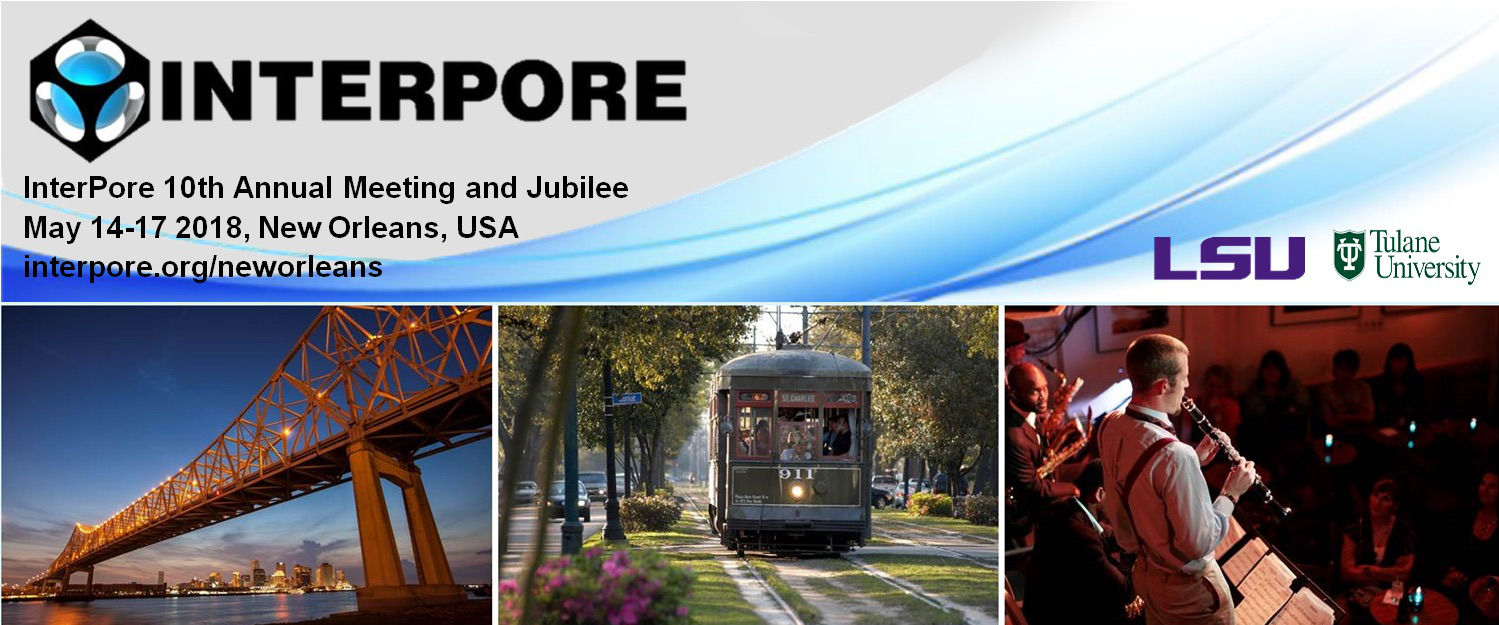Speaker
Description
This article describes the direct comparison between pore-level computations on a spherical-void-phase (SVP) porous material and volume-averaged computations done for the same domain. Pore- level simulations are conducted on random SVP geometries generated using the Discrete Element Modelling (DEM) approach developed by Dyck & Straatman [1] over a range of flow and heating conditions. Pore-level simulations for cases of constant wall temperature require nearly 17,000,000 tetrahedral elements and provide data that are used to establish the fluid permeability and interstitial convection coefficient of the REVs under consideration. Additional pore-level simulations are then conducted on the same REVs except treating it as being heated on one side by a constant-temperature substrate. These simulations require discretization of both the fluid and solid phases of the REV and require nearly 32,000,000 tetrahedral elements to produce grid-independent solutions of forced convection heat transfer. Analogous conjugate heat transfer simulations are done using a volume-averaged solver on the same domain using the closure parameters established in the pore-level simulations. These simulations require only 5800 hexahedral elements to achieve grid convergence to better than 1%. Comparison of the conjugate results from the pore-level and volume-averaged solvers provides data to establish a solid-phase conduction shape factor that is necessary to modify the diffusion term in the volume-averaged solid-phase energy equation. The solid-phase conduction shape factor is dependent only on the geometric structure of the porous domain and accounts for the additional resistances in the conduction path due to elongation and area changes along the path [2-5]. Even though there is no analytical means for establishing the conduction shape factor for complex geometric models, it is shown that the factor can be established for a particular geometric model on the basis of comparisons for a single heating condition. Subsequent simulations comparing the pore-level and volume-averaged results show that the accuracy of volume-averaged computations is enhanced by as much as 20% with the proper characterization of the solid-phase conduction shape factor.
References
[1] Dyck, N., Straatman, A. G., 2015 “A new approach to digital generation of spherical void phase porous media microstructures,” Int. J. Heat Mass Transfer 81, 470-477.
[2] Yang, X., Lu, T., Kim, T., 2013a, “Thermal stretching in two-phase porous media: Physical basis for Maxwell model,” Theor. Appl. Mech. Letters, 3(2): Article 021,011.
[3] Yang, X., Lu, T., Kim, T., 2013b, “A simplistic model for the tortuosity in two-phase close-celled porous media,” J. Phys. D. Appl. Phys, 46, 125305.
[4] Yang, X., Lu, T., Kim, T., 2013c, “Effective thermal conductivity modelling for closed-cell porous media with analytical shape factors,” Transp. Porous Media, 100, 211-224.
[5] Traxl, R., Pichler, Ch., Lackner, R., 2016, “Thin-shell model for effective thermal and electrical conductivity of highly porous closed-cell metal foams,” Transp. Porous Media, 113, 629-638.
| Acceptance of Terms and Conditions | Click here to agree |
|---|


